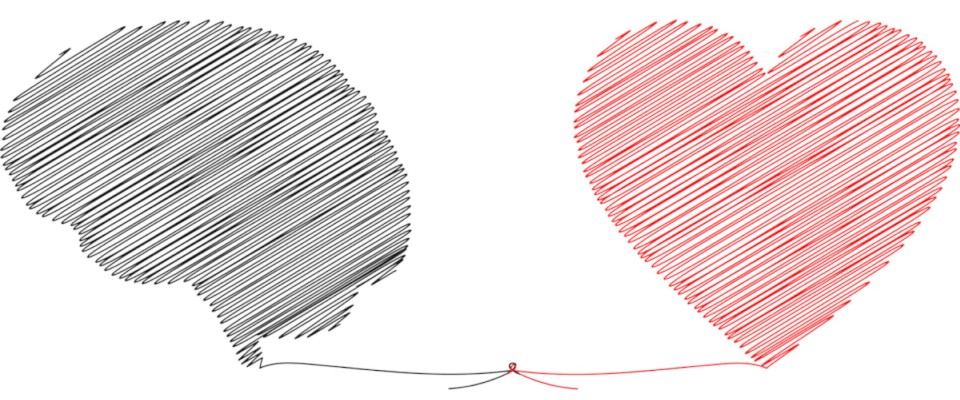Please take everything I express as provisional: these are statements of a vision for how—by applying the principle of local intelligence in complex, living systems to our society—the experience of all people could be improved. A lot.
The transformation I am describing would upgrade any institution or organization that (partially) runs on what I am calling “Obedience OS” to “Consciousness OS”. So, the question I am asking myself is slightly different this time and hypothetical in nature:
How would that work?
I will cover the transmission of implementation-of-work instructions, and the subsequent generation and application of force. How do the parts of a system that implement the work get to have a say in that process?
The image I am using when I envision the upgrade is this: instructions are sent from the human brain to the various body parts, like the legs or hands. And a common, yet incomplete perception might be that your brain is the master of the body in this image. The other parts are bound by the commands it sends.
For the majority of your waking life, that’s a true enough description. The relationship (almost) reverses under certain conditions however. Imagine that through some previous commands, your leg has incurred some serious injury, like a fracture. When the brain now sends some new commands, your leg begins to move. There is a good chance that your leg will subsequently inform your brain with a message that goes something like this: “moving in the present circumstance will further damage the organism severely. Please do not move!”
Your brain correctly interprets this signal. At least for the time being, your leg is in charge of keeping you safe from injury—even in moments where your brain might forget about it. Local intelligence, present in your leg, creates pain whenever necessary, to prevent things from getting worse.
Which brings me to the question of how would that work among humans in an organization? To start with, I believe that hierarchical structures have enormous advantages. Imagine that your legs, in general, had a lot of moment-by-moment capability to take your body wherever they feel like going. This would create a dangerous source of noise and organizational instability. I am not suggesting to transform things into some kind of chaotic dynamic systems.
Instead, I am seeking a solution that is similar to the pain of a broken leg. This would allow people at the bottom of a hierarchy—and in fact anywhere along the organizational axis of transmission of work instructions—to send feedback up the chain of command so to speak. These need to be correctly processed to avoid issues down the line.
Human beings who implement most of the actual work in an organization carry, relatively speaking, quite a bit more local intelligence than the leg compared to the brain in the image. It thus stands to reason that the feedback would be much richer and most likely contain perceptions of not-yet-incurred risks.
Imagine your legs could sense an upcoming impact with an object before a collision occurs. If your legs had this power, and your brain would continually insist on walking into things, maybe you can see how the relationship I would characterize by mutual trust between the two—where both sides have implicit faith in the veracity of the signal as useful and necessary to adhere to—would be somewhat broken.
What would have to change, and how would that impact how hierarchical organizations function? The first that comes to mind is what I call dealing with the “pain killer effect”. Through OS Obedience, we are currently not in the position of workers being educated in a way to generate feedback signals of sufficient quality and strength.
My own experience of almost 20 years in the academic research context tells me that very frequently the people who implement the work know when what they are doing is harmful to the organization in the long term. In such situations, the average researcher yet seems to lack the necessary courage and skill to express their own intelligent assessment in ways that would be responded to. In addition, the management of such organizations may simply not be listening for and to any such pain signals.
Both sides need to undergo significant internal growth: the legs (workers) need to grow pain receptors that can send high-quality signals to the brain (management). And the brain needs to become receptive to those signals, allowing the legs to interrupt a movement whenever damage is anticipated. Finally, both parts need to learn to trust that the respective signals are benevolent in nature when expressed.
The initial impact would, during a transition period from OS Obedience to OS Consciousness, be somewhat disruptive. I imagine that in many organizations, people at the bottom do not necessarily trust that upper management has their best interests at heart—a remnant of running on OS Obedience for a long time. I believe, however, that it is overall a much better situation if implemented well.
There is a lot of resistance present within organizations in which this trust is lacking. This is making processes less and less efficient over time, creating red tape everywhere. Much resistance could be resolved, freeing up the full potential for rapid movement and adjustments. And this would make organizations perform better rather than worse.
